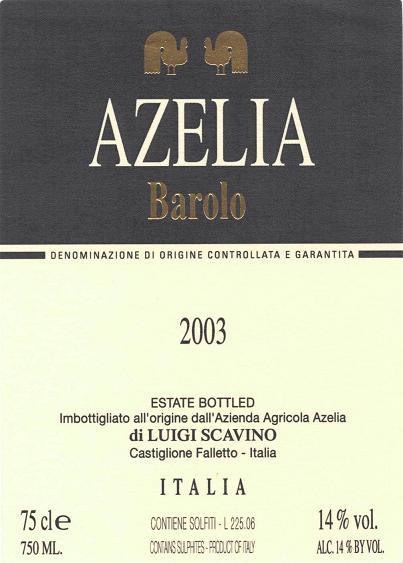2003 Barolo Nebbiolo
The Azelia Barolo, a stunning example of Nebbiolo from the renowned Barolo region, captivates the senses with its deep, ruby-red hue. This exquisite wine exudes an elegant and full-bodied character, enveloping the palate in a rich tapestry of flavors. Its notable acidity imparts a bright and lively freshness that beautifully complements the wine's prominent fruit intensity, showcasing ripe cherries, dried roses, and hints of leather and spice. The tannins are firmly structured, lending complexity and depth to the overall profile, while the wine’s inherent dry quality ensures a well-balanced finish that leaves a lasting impression. As one sips this outstanding vintage from 2003, the harmonious marriage of characteristics unveils the true spirit of Barolo, making it an exceptional choice for any enthusiast.
The Azelia Barolo, a stunning example of Nebbiolo from the renowned Barolo region, captivates the senses with its deep, ruby-red hue. This exquisite wine exudes an elegant and full-bodied character, enveloping the palate in a rich tapestry of flavors. Its notable acidity imparts a bright and lively freshness that beautifully complements the wine's prominent fruit intensity, showcasing ripe cherries, dried roses, and hints of leather and spice. The tannins are firmly structured, lending complexity and depth to the overall profile, while the wine’s inherent dry quality ensures a well-balanced finish that leaves a lasting impression. As one sips this outstanding vintage from 2003, the harmonious marriage of characteristics unveils the true spirit of Barolo, making it an exceptional choice for any enthusiast.




